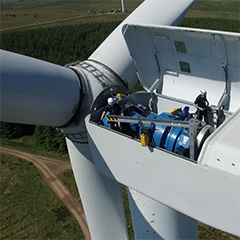In response to the global market requirement for more efficient and targeted O&M strategies for operational wind farms, there is an increasing need for operators to focus on turbine performance and reliability. Having recognised this as a priority to support operational teams and to advise on strategies to optimise sites, our approach has been to research, develop and implement several new methodologies that highlight short and long-term considerations for operations and asset management (O&M) planning across client portfolios, advanced performance engineering (APE).
The detailed analysis of wind regimes can pinpoint the optimum time frame for undertaking maintenance activities to ensure revenue losses are minimised; whilst turbine benchmarking assessments can identify trends specific to individual technologies and therefore highlight and inform the future management and maintenance of wind farms.
In this article, we will take a look at the role of APE and how it can aid operators in their decision making.
We begin with the drivetrain of a wind turbine which is one of the most expensive and important components of its mechanical functionality. As such, it is standard practice for a site to have measures in place to monitor the health of the drivetrain components. These include remote systems such as supervisory control and data acquisition (SCADA) and vibration monitoring, collectively known as a condition monitoring system (CMS).
It is vitally important to employ an independent expert in the analysis of the data produced by this system to ensure a clear understanding of the drivetrain components’ performance.
By interfacing with existing onboard vibration measurement systems and providing independent analysis of the data, detailed drivetrain performance assessments can be provided.
This analysis will identify any deviations from the normal expected performance between turbines or over time. By combining knowledge of the site behaviour with knowledge of the particular turbine make and model, and cross referencing with ISO standard information, we can make informed decisions about the health of the drivetrain and advise site teams of any likely sources of failure prior to the component status becoming critical.
Vibration data should be analysed as soon as it is made available – reviewing activities from both a time and vibration frequency perspective. Any issues that are observed as a result of data analysis can then be flagged and acted upon as soon as possible.






























